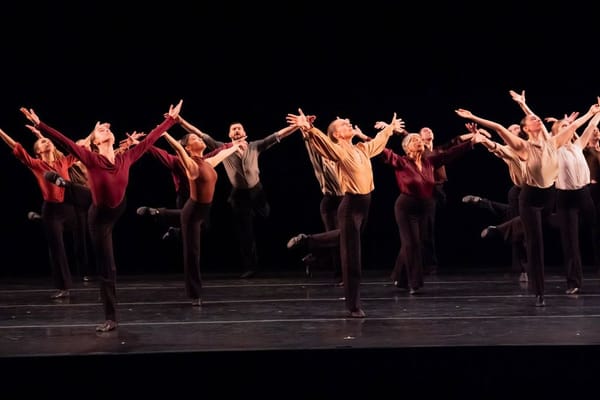One Night Only
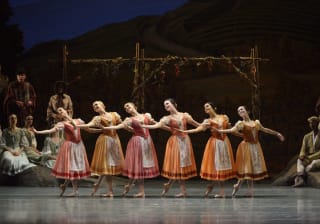
Giselle"
American Ballet Theatre
Metropolitan Opera House
New York, NY
June 26, June 28, matinee, and evening, 2025
ABT’s sturdy production of “Giselle” was given ten times this season, with ten different Giselles scheduled (Catherine Hurlin’s illness gave Devon Teuscher two performances). Though “Giselle” is one of ABT’s more frequently performed works, this meant that each dancer has very few opportunities to explore and experiment with their approaches, so it was impressive to see how varied the dancers I saw were. The blocking of the mad scene, though, appears to have been set, with each dancer starting quietly, with her back to the audience, approaching the stage to pick up that imaginary daisy, and a frantic outburst when her foot feels the sword; within those constraints, though, each dancer found her own voice.
Kevin McKenzie’s production is recognizably traditional, though I do miss Albrecht’s opening dismay when he realizes that, despite his disguise, he still has his sword, which he then gives Wilfred to hide; this emphasizes the importance of Hilarion’s eventual discovery. In most versions I have seen, the hunting horn is left hanging by Giselle’s cottage by the noble party so when Hilarion matches the crests he realizes who Albrecht is; McKenzie’s version leaves this out. And I do miss a sympathetic Bathilde and the searing irony of two girls celebrating their engagements. But these are minor omissions and logic is not really crucial to the ballet—otherwise we would all be wondering why on earth someone didn’t run for a doctor.
I saw three Giselles, Cassandra Trenary with James Whiteside (June 26) in her final “Giselle” before leaving ABT to join the Vienna State Opera Ballet, Devon Teuscher with Joo Won Ahn (June 28, matinee) substituting for Catherine Hurlin, and Chloe Misseldine with Aran Bell (June 28, evening) in her New York debut. Trenary was a spunky Giselle and, though not quite as rambunctious as she was in her debut, she was ready to tease her mother and was clearly thrilled to be in love. This is more in line with the original character than the “one delicately pointed foot in the grave” heroines we often see, and moving though this interpretation can be, a feisty Act I Giselle provides a vivid contrast to her Act II ghost, emphasizing her spiritual evolution.
Trenary's spunk didn’t show up in her diagonal hops on point, which were low and homebound, refusing to travel far. But she stayed completely in character, with her glowing eyes on Albrecht, and made the little hops look like the echoes of her heartbeat. It was more moving than many of the more adventurous journeys across the stage I have seen. She made every move seem directed towards Albrecht, almost bursting with happiness. This almost single minded joy made her mad scene seem like a switch had flipped, as all her happiness turned instantly and completely to despair. She gave it an intense, interior quality, as she bent over in pain, almost frozen with shock; she looked at the imaginary daisy as if she couldn’t understand why it had lied to her.
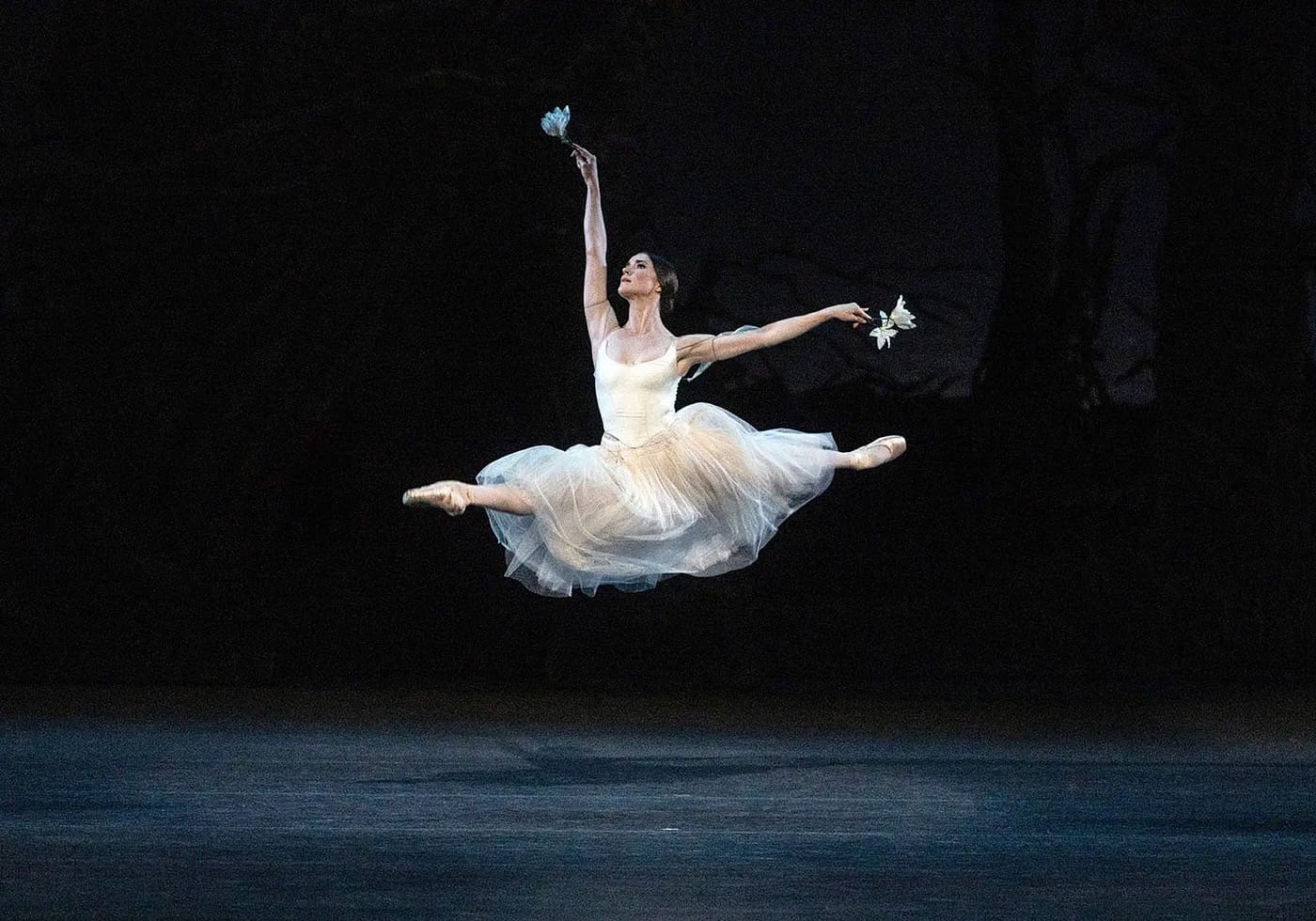
She carried this intensity into the second act, and her opening blur of spins showed a ghost who still loved dancing. She seemed to be aching to hold Albrecht again, straining against her return to the grave to give him that one last flower. She didn’t overemphasize the iconic Romantic poses, and often let her arms in a more naturalistic ; not textbook perhaps but it suited her vivid, determined approach.
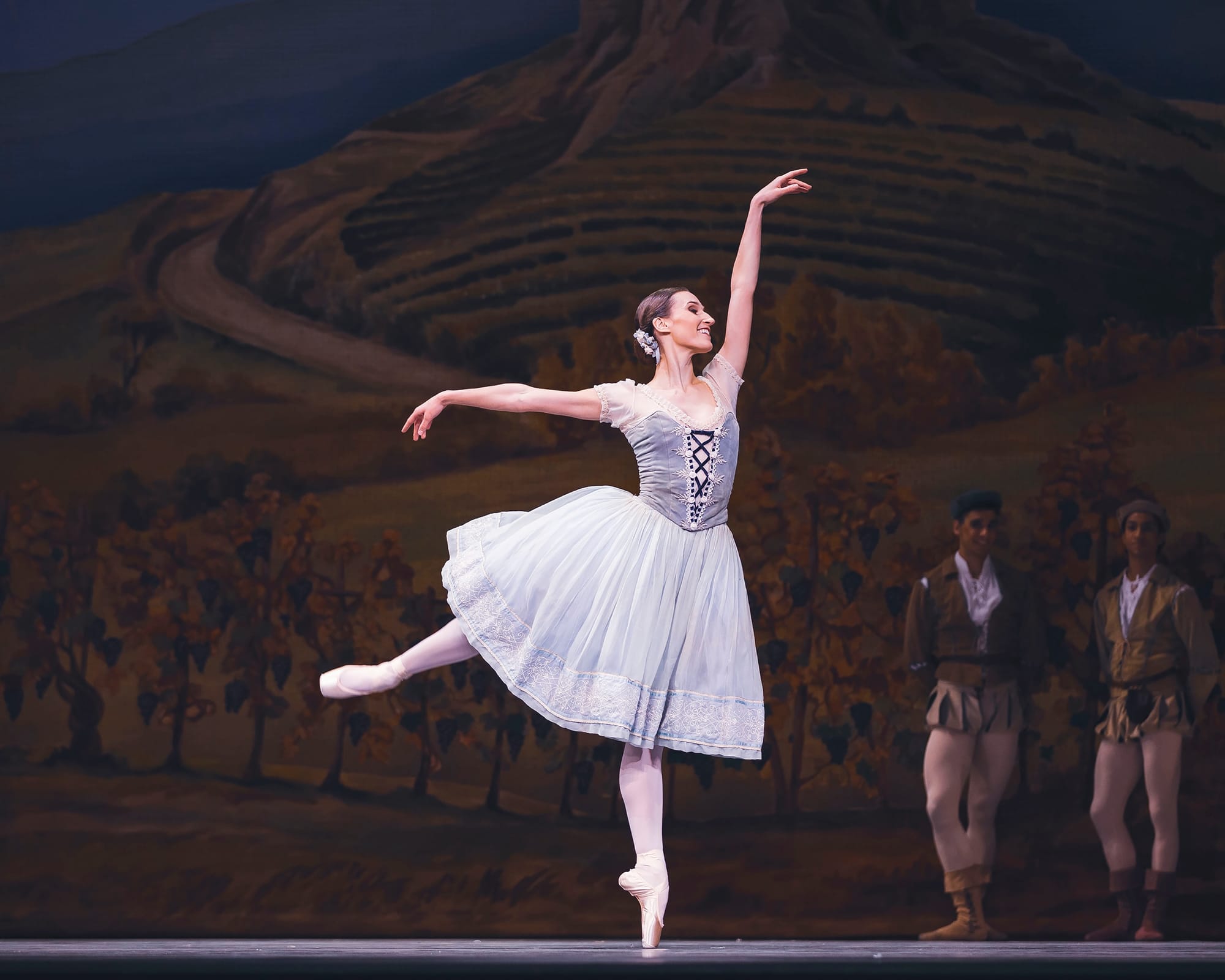
The tall, stately Teuscher is not a textbook Giselle either (she is a magnificent Myrta), but she has the ability to use her phenomenal gifts to create believable characters. She wasn’t a girlish, bouncy Giselle, she was somewhat shy and reserved but gloriously, confidently in love with Albrecht. Her performance was full of telling details; I loved the way she gave a little shiver when Hilarion grabbed her, not fearful or disgusted, but just as if she couldn’t imagine anyone but Albrecht touching her. Her final solo was strong, with beautifully held balances and her diagonal hops were secure, and despite the burst of applause as she crossed the stage she gave the impression she was dancing only for Albrecht. Her mad scene was quite effective, and as she plucked the imaginary daisy with a frantic fervor, she looked broken and haggard, almost gasping for air.
Her Act II was lyrical, and boneless, and she had no issues with technique, and her dancing flowed, apparently effortlessly, as she seemed to float in the air, protecting Albrecht with a air of subdued sorrow. She seemed relieved when the bells rang, though there was no triumph, just a misty desperation as she seemed to disappear in the dawn. It was a luminous performance.
One of the most anticipated Giselles of the season was Chloe Misseldine’s New York debut. Like Teuscher, she is tall and is an impressive Myrta, but, despite a few technical wobbles, she created a very convincing character. She was a youthful, happy girl, playful rather flirtatious as she pretended not to want to take his hand, though she was radiant as she nestled in his arms. One nice touch—she fed Albrecht a grape during the harvest scene, a quietly confident little gesture. Her Spessitzeva solo showed steady balances and controlled turns, and though she did have a little hesitant bobble at the beginning of the diagonal, she finished strong. Like the other two Giselles, she made it clear that she had eyes only for Albrecht, no matter how far she hopped. Her mad scene was effective, if a bit less individual than the others. Her dark hair and eyes made her face look absolutely white, and she seemed absolutely broken.
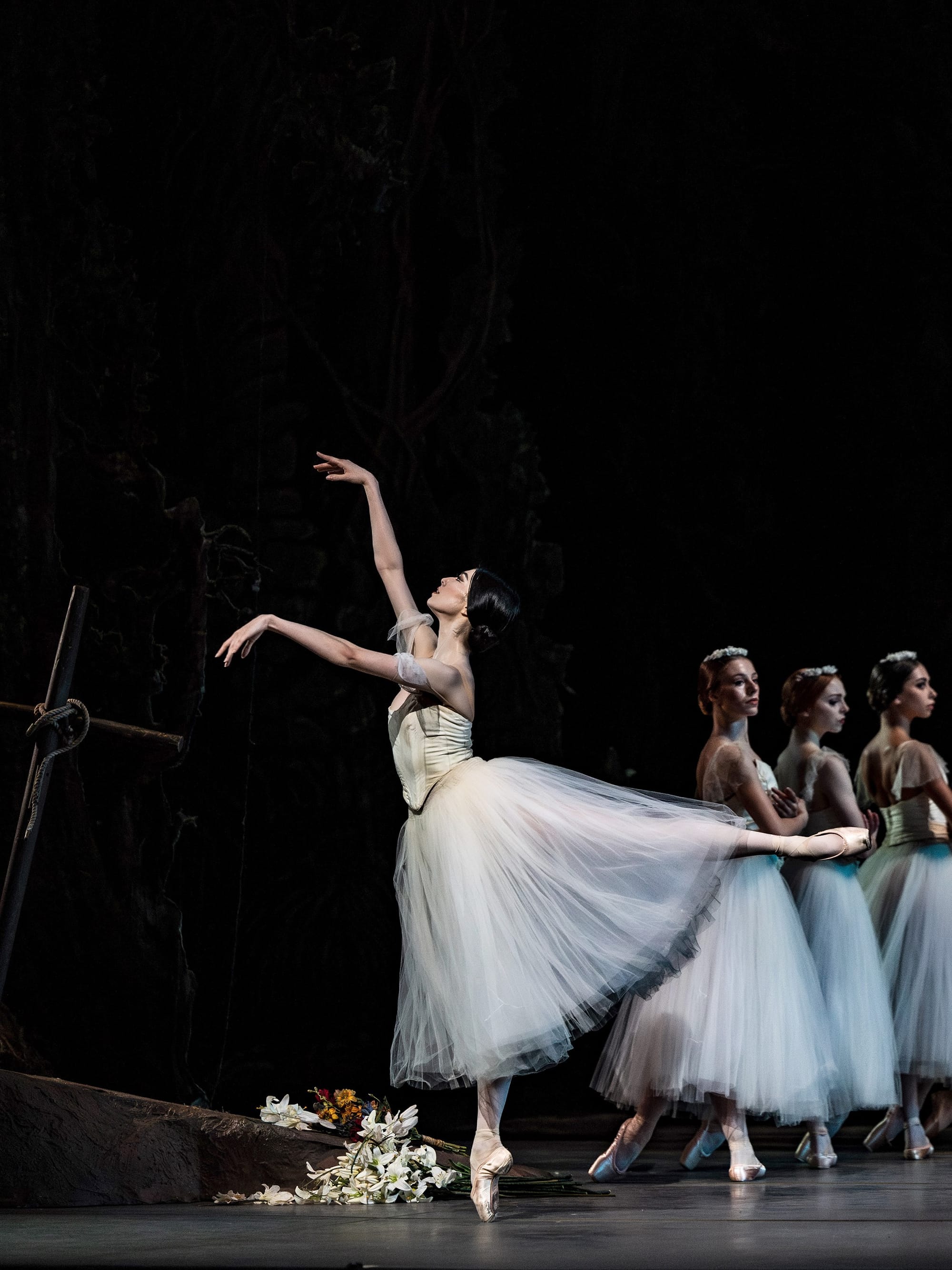
She did have another slight mishap in the Act II opening adagio, as she struggled for her balance, but the rest of her performance was breathtaking. She wore her hair in a low bun and with her long arms and extended body resembled the famous pictures of Olga Spessitzeva, and with her long, flowing limbs she often looked like a lithograph come to life, but she didn’t just waft from one well-known pose to another, she was a ghost of a vulnerable young girl struggling alone. She was a lyrical wraith with a fighting spirit, determined to save Albrecht and when the dawn bells pealed she opened her arms in wonder at her victory. With luck, she will have more than one performance to refine her already impressive portrayal.
Giselles don’t dance alone, of course, and the character of Albrecht is, or can be, one of the most interesting of the male classical roles. He can be a cad on the make who learns too late what he had, or he can be a privileged boy whose feelings got the better of him, or any mixture of the two. The current Albrechts tend to favor the second option, though this wasn’t always the case; I remember Robert Hill giving Giselle’s friends the once over, just in case Giselle didn’t work out, and Marcelo Gomes’ amused, slightly condescending smirk at Giselle’s fear of that silly little fairy tale. This made their second act guilt and remorse so much more powerful.
An older Albrecht can be very convincing as a practiced seducer (I remember Nureyev late in his career almost laughing at Giselle’s naïveté, ignoring her throughout the mad scene, and then, after seeing her dead on the ground, collapsing in grief.) Whiteside, clearly older than Trenary, could, I think, be very effective in this approach. But he was in love with her from the beginning, worrying about her heart, and sharing her uneasiness at the story of the wilis, which didn’t quite gel with his arrogance towards Wilfred or his attempt to bluff his way out of his predicament.
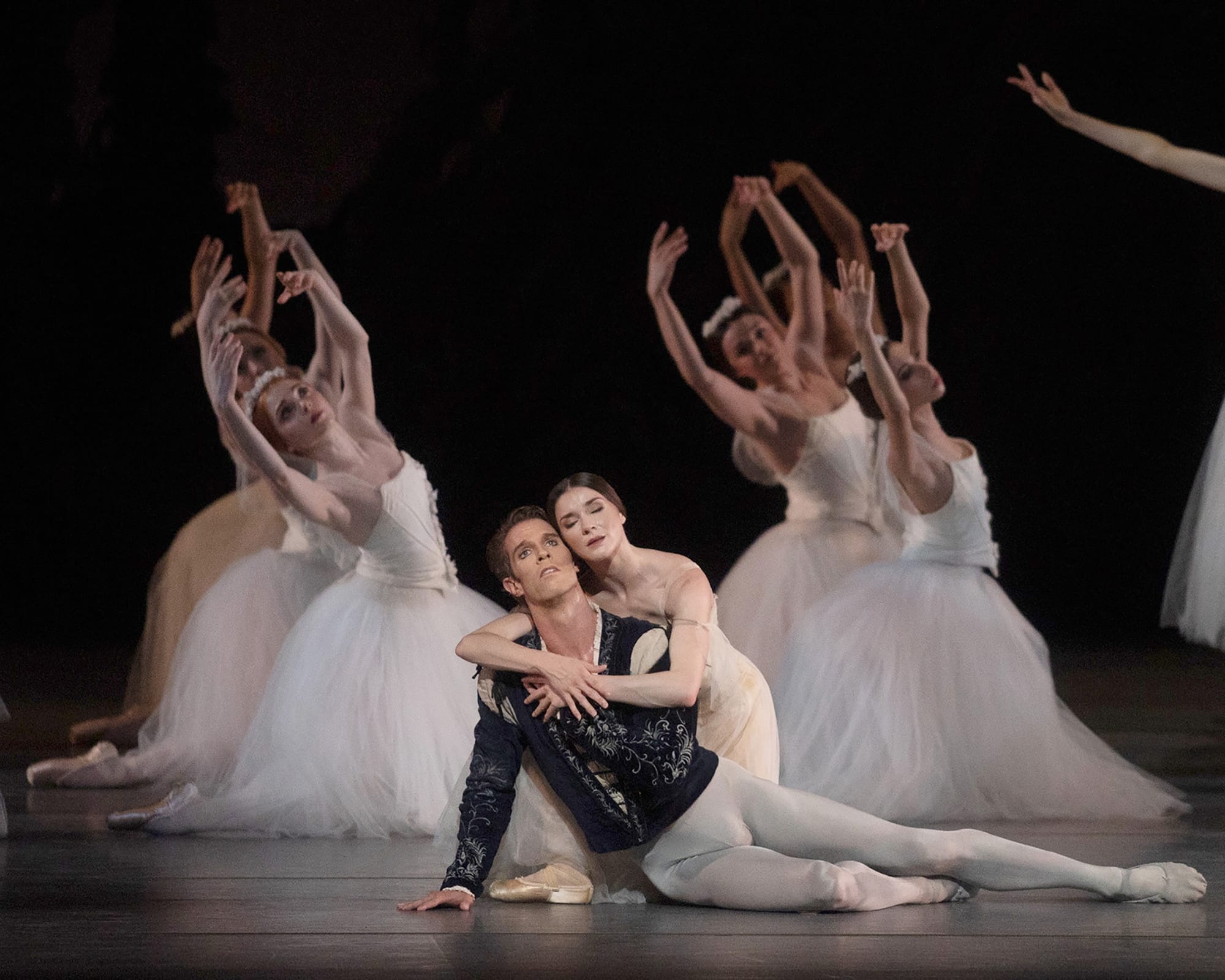
His walk with the lilies was a bit studied, but his partnering was gracious, and those horizontal lifts just floated upwards. His solos were a bit underpowered, but his final, desperate brisés (in place of the entrechats) were fast and dramatic.
Ahn, a powerful and stylish dancer, has never been a dramatic powerhouse, but his Albrecht was a revelation; quiet but richly moving. He was a very gentle hero, softly caressing Teuscher, comforting her when the tale of the wilis frightened her, and his Act I dancing was focused on her. He did have tinges of guilt, but he was weak rather than consciously deceitful; he was a very human Albrecht.
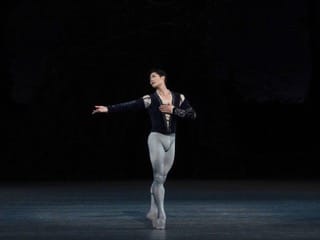
His Act II entrance was almost hesitant, as if he were embarrassed to approach her grave, and when Giselle’s spirit showed in the flowers, he cradled them with relief, realizing that her spirit was there and that she had forgiven him. His dancing was sharp and clear (such elegant cabrioles) and his partnering exemplary. He did the entrechats—I did not count, but he did a lot of them, and was convincingly exhausted. The final scene, as he stood alone on the stage, had a powerful and heartfelt simplicity, struggling to stand up and then finally kneeling, holding on to the final flower.
Bell, too, gave a remarkable performance, and his youthful, guileless air of just living for the moment made his impulsive love for Giselle believable. He was clearly smitten with Misseldine (who wouldn’t be?), and, though worried by Birthe’s foreboding, managed to push his fears away. His angry lunge towards Hilarion seemed to come from fear, and at the sound of the answering horn, he turned to Giselle with an apologetic helplessness, trying, in vain of course, to comfort her.
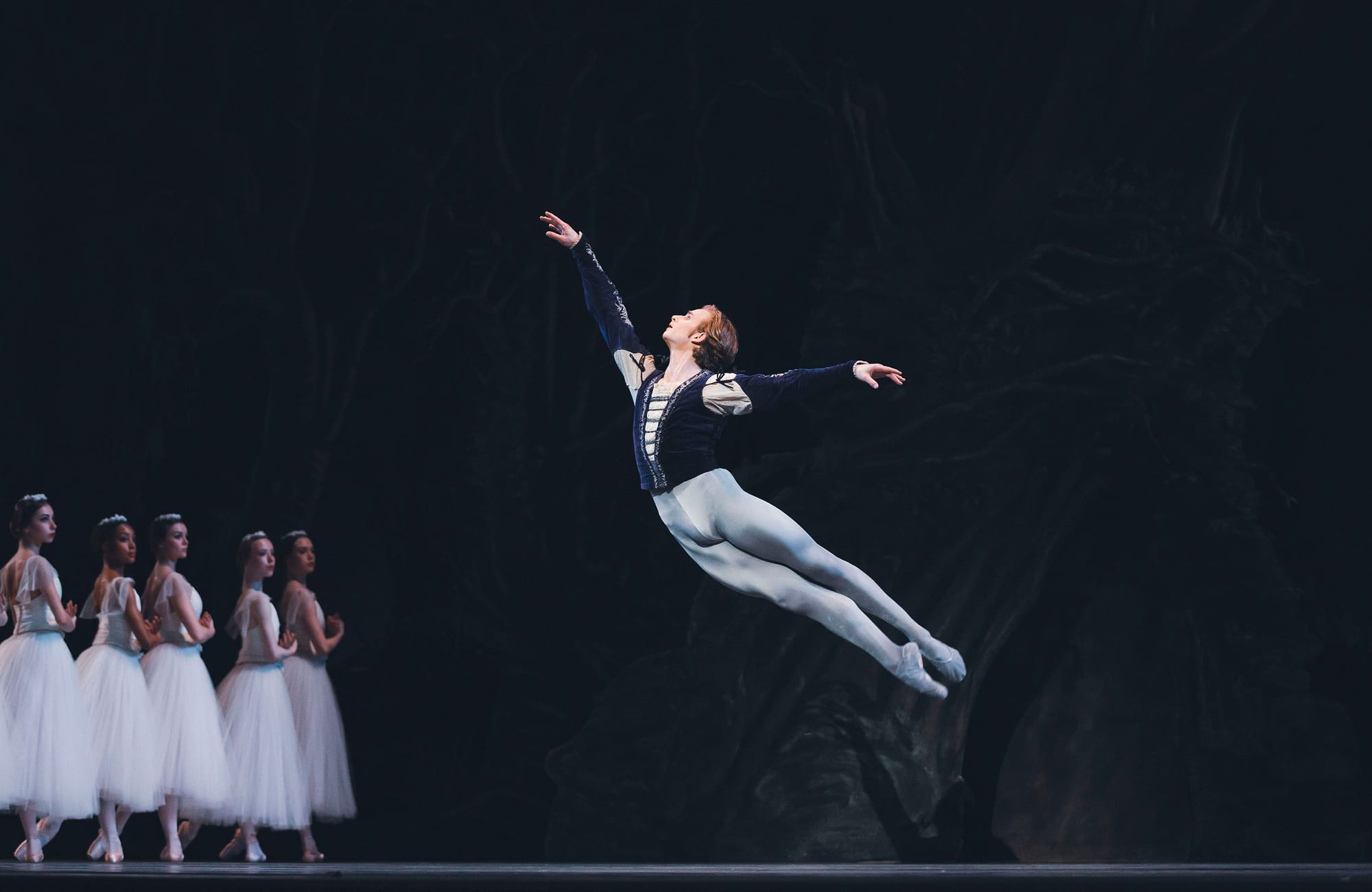
The guilt and sorrow showed up in his slow approach to her grave. Bell has developed a very expressive face, and both his hope and his awe showed clearly when he felt her presence; “Did I dream it? Is she really here?” was as clear as any subtitle. His dancing was superb, strong and elegant. I love the way he leaned back with his cabrioles, as if he were too exhausted to remain upright. He did numerous entrechats, as his arms got wilder, and then collapsed in a heap. His final moment, while holding the flower she had given him was wrenching. “Giselle” can be astoundingly powerful, a simple story of complex emotions, told clearly in dance and gesture.
Some of its power comes from Giselle’s struggle with Myrta; I saw two, Fangqi Li (June 28, matinee) and Ingrid Thoms in her debut (June 26 and June 28, evening). They are both small, light dancers, and I missed the anger and danger of many of ABT’s previous Myrtas; flowing bourrees and light jumps, no matter how high, are not threatening. Both were fine romantic stylists, with soft, wafting arms but so far, neither seemed to be able to project mystery or menace.
There is no mystery about the peasant pas de deux which was not in the original libretto, but added as a showcase for another dancer. It has been explained, or excused, as a way to contrast Giselle’s tragic fate with that of a happy couple; in McKenzie’s production, the couple dance for the visiting nobles because Giselle’s mother is worried about her health. (Of course, soon after that Giselle breaks out into her own exhausting solo—so much for mothers.) I saw three couples. Léa Fleytoux and Jake Roxander (June 26) were the most spectacular. Roxander is a technical marvel as well as a charmer, and his jumps defy explanation—he really did make the stage look like a trampoline. Zimmi Coker and Tyler Maloney (June 28, matinee) and Breanne Granlund and Carlos Gonzalez (June 28, evening) were equally charming, acknowledging the nobles and their friends. Both couples had a wonderful rapport, and made a fine case for the light hearted interlude.
Hilarion is not light hearted, and all three (Andrii Ishchuk on June 26, Patrick Frenette on June 28, matinee, and Joseph Markey on June 28, evening, gave him a rough dignity. Frenette’s Hilarion was especially sympathetic, convinced that if Giselle knew the truth, she would turn to him. Markey was a bit gruffer, trying to force Giselle to choose him. They all died energetically and dramatically. Fortunately, Giselle, over 180 years old, is still alive, thanks to so many dancers who care about her.
© 2025 Mary Cargill



